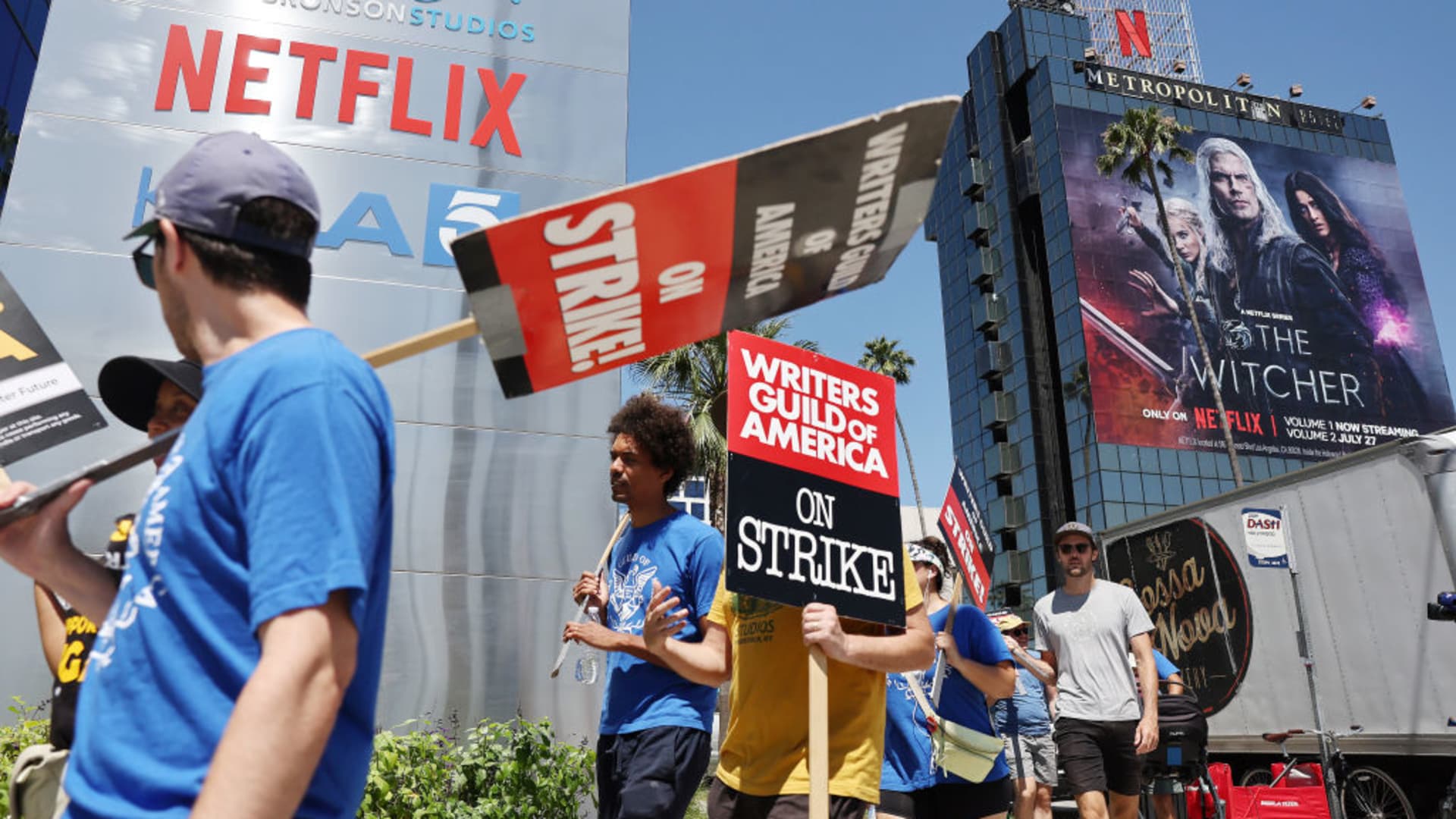SAG-AFTRA members walked the picket line outside Netflix offices in Los Angeles on July 11, 2023, carrying signs to show their solidarity with striking WGA workers. This demonstration highlights the ongoing struggle for AI protections, better wages, and a share of streaming profits in Hollywood.
The rise of streaming, spearheaded by Netflix in 2007, has disrupted the traditional economics of the media industry. While its long-term viability remains uncertain, legacy media companies like Disney, Warner Bros. Discovery, Paramount, and NBCUniversal have been forced to compete in this new landscape.
To compete with Netflix’s original content, these studios have invested in expansive content libraries and the promise of new shows and films for consumers. However, the subscription-based streaming model has proven challenging, with high licensing costs and low revenues per subscriber eroding profits. This became evident when Netflix reported a loss in subscribers in 2022, prompting other media companies to reevaluate their strategies.
In response to these challenges, media organizations have implemented measures such as advertising, cracking down on password-sharing, and raising prices to offset losses. Content spending budgets have also been reduced, with a focus on quality over quantity. Despite these efforts, streaming remains the primary focus for these companies as consumers continue to shift away from traditional TV.
Media companies are now attempting to bring various business models together to satisfy consumer demands. However, the industry is still grappling with the aftermath of excessive spending on content and a failure to adapt to changing consumer behaviors. Streaming has triggered a content arms race, with studios spending billions on new shows and films in an attempt to attract and retain subscribers. But this strategy has not yielded the expected profits.
The astronomical costs of producing shows such as Disney’s Marvel series and Netflix’s “The Crown” and “Stranger Things” have strained budgets. In the past, budgets for popular TV shows like “Law & Order” were significantly lower. The disconnect between rising costs and revenue models has led to tension between actors, writers, and the industry, as they struggle to find a fair share of the profits.
Transparency is also an issue in the industry, as streaming-viewership data is not publicly available. This lack of transparency has complicated contract negotiations between studios and industry professionals, further exacerbating the disconnect.
In summary, the emergence of streaming has transformed the economics of the media industry, but profitability remains a major challenge for many studios. The industry is grappling with the need to find a balance between content production costs, subscription revenues, and consumer demands.
Denial of responsibility! Vigour Times is an automatic aggregator of Global media. In each content, the hyperlink to the primary source is specified. All trademarks belong to their rightful owners, and all materials to their authors. For any complaint, please reach us at – [email protected]. We will take necessary action within 24 hours.


